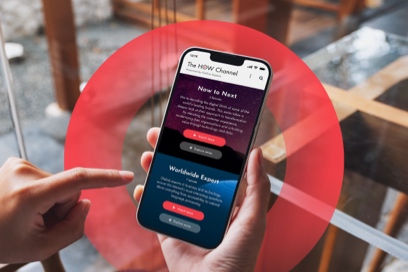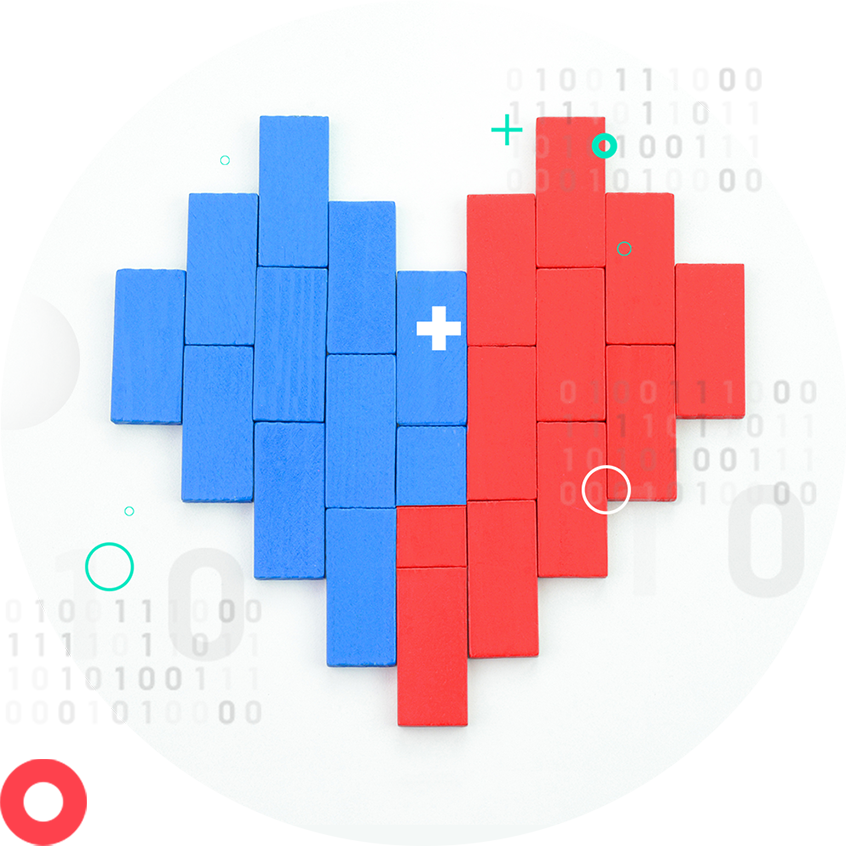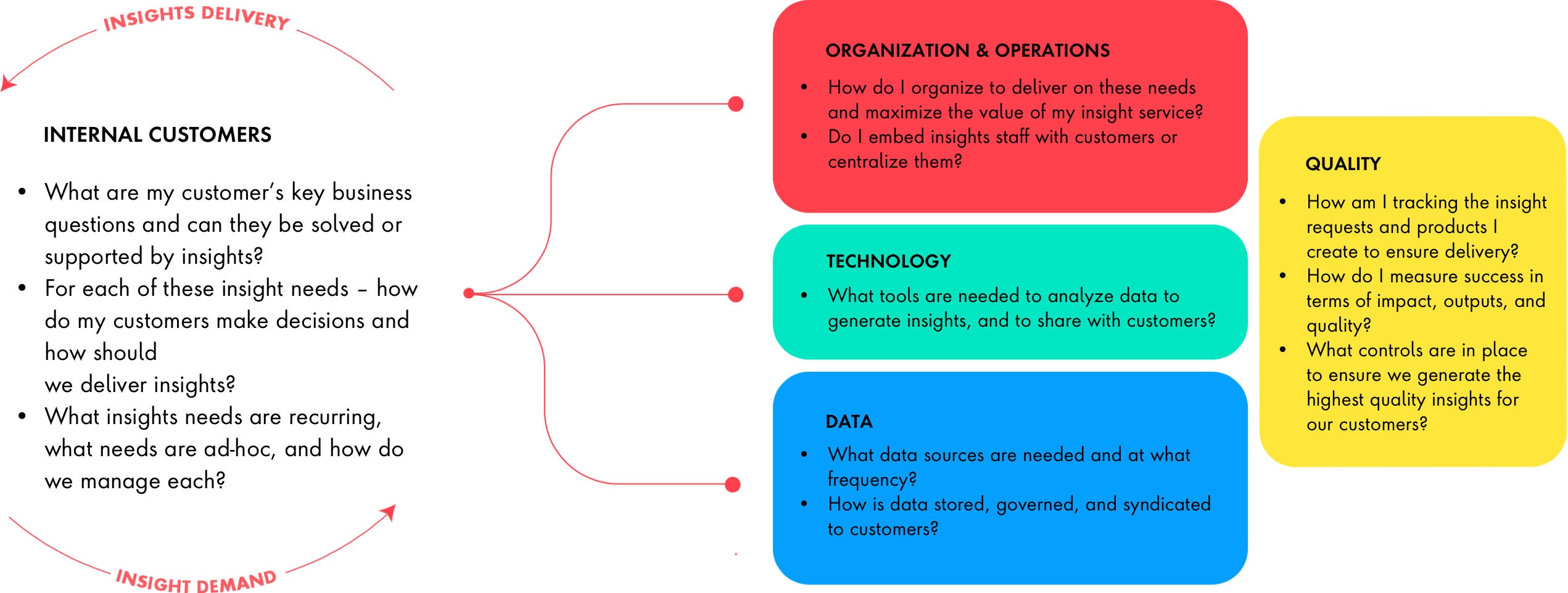Start with a fresh perspective
Insights organizations prove their value by leading the internal business units they serve to greater understanding and greater action. For this reason – building an insights organization starts with a clear internal customer value proposition and service model.
While there are varying levels of maturity across insights organizations, ranging from early stages of formation to being operational for years—all stand to benefit from these fundamental tenets when building a service model:
- Put your internal customers first. Look at the structure, data, technology and other insights capabilities through the lens of your internal customers and how these elements can maximize value for them. Data and technology are necessary enablers, but they should not lead the design.
- Know what you’re trying to solve. Understand the business problems your internal business unit customers are facing, as well as the frequency, fidelity, speed and process against which decisions are made.
- Collect and build to purpose. Before collecting ‘all’ the data or starting to pursue time-consuming and expensive modeling and tool builds, let the needs of your internal customer drive your actions. Prioritize your customers’ needs and prioritize insights capability development accordingly.


















